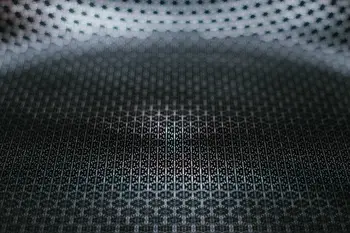Composite materials ingeniously merge diverse substances, crafting a distinct material boasting unique properties. Carbon fiber composites exemplify this, fusing resilient carbon strands within a resin matrix. These matrices, composed of exceptionally thin yet sturdy carbon fibers, yield a formidable base material. Composites achieve exceptional strength-to-weight ratios, structural resilience, and versatility through this intricate amalgamation, catering to aerospace and beyond industries. This innovative synergy between components empowers composite materials to transcend traditional material limitations, offering a platform for groundbreaking advancements across various fields of application.
The Delicate Carbon Strands
The delicate carbon filaments, a mere 1/10,000th of a human hair's diameter, pose a formidable production challenge. Crafting just a single gram demands around 20,000 of these strands. While inherently delicate, their genuine strength manifests when they're united with a plastic resin. This fusion produces a material that defies fragility, showcasing remarkable strength and resilience. Through this union, these slender strands transform into a robust component, exemplifying the astonishing capabilities of composite materials.
The Process of Carbon Fiber and Composites
The creation of carbon fiber and composite materials involves a meticulous process. Carbon fibers originate from carbon-rich precursors like polyacrylonitrile (PAN), rayon, or pitch, undergoing chemical treatment, heating, stretching, and carbonization. This progression yields high-strength fibers boasting a carbon content of 90% or more.
These fine carbon filaments intricately intertwine, forming a dense mat. Under heat, they meld together within a mold, establishing an interlocking honeycomb structure. These mats are then cut into resin-saturated sheets. Upon solidification, these sheets unite, crafting structures of diverse shapes and configurations.
The Role of Resins
Carbon fibers offer unparalleled strength and weight advantages when combined with a resin matrix, such as epoxy. Epoxy stands out due to its superior moisture, temperature, and chemical resistance, making it an excellent choice for specialized applications like boats. Epoxy resins are commonly used due to their excellent adhesion and mechanical properties.
Strength and Versatility
The resulting material is immensely robust, capable of withstanding pressures up to 1,000,000 N/cm2, a magnitude far surpassing steel's capacity. This versatile material amalgamates the lightweight stiffness of carbon with the toughness and impact resistance provided by the resin.
Balancing Act: Carbon and Resin
The delicate balance between carbon and resin holds paramount importance. Striking the perfect ratio is pivotal—a resin shortage jeopardizes strength, undermining the material's robustness. Conversely, excess resin contributes unnecessary weight, adversely affecting the final product's performance. Achieving this equilibrium ensures optimal structural integrity and performance, highlighting the critical role this balance plays in the quality and efficiency of composite materials.
The Manufacturing Process
The manufacturing of carbon fiber composites involves several key steps. The layup process entails placing the carbon fibers in a mold in the desired orientation and impregnating them with the resin matrix. Subsequently, the curing process, which involves heating the mold to a specific temperature and pressure, cures the resin and bonds the fibers together. Finally, the post-curing process further enhances the mechanical properties of the composite.
Protection Against Environmental Elements
Carbon fibers, susceptible to oxidation, require protective coatings, typically silicone or epoxy-based, to safeguard against corrosion caused by oxygen exposure. Ensuring a sealed surface protects the composite from moisture, heat, and chemicals.
Unique Properties and Applications
Carbon fiber composites boast a range of advantages, including high strength, stiffness, and fatigue resistance, coupled with low weight and thermal expansion. These properties make them highly sought after in aerospace, automotive, military, and recreational applications. Carbon fiber composites, fabricated in sheets or mats, use diverse applications, carbon fiber products ranging from bicycle frames to boat hulls, owing to their ability to adopt intricate shapes.
Ongoing Developments
While carbon fiber composites have revolutionized many industries, they are not without challenges. Their non-isotropic nature makes them difficult to model and simulate, and can be susceptible to galvanic corrosion. However, ongoing research is focused on further exploring alternative and less expensive precursors, such as lignin derived from pulp and paper waste, to enhance carbon fiber composites' viability and sustainability.
The science behind carbon fiber composites is a fascinating blend of material engineering and manufacturing expertise. As ongoing research and technological advancements continue to push the boundaries of what is possible, carbon fiber composites are set to remain a cornerstone of innovation across a myriad of industries.
Source by- https://www.atoallinks.com/2023/how-fibers-resins-and-processes-work-together/





